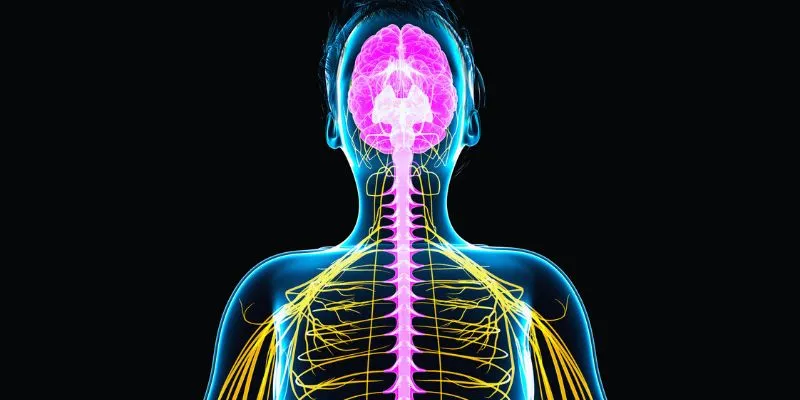Adaptive Yoga Is Proof That Yoga Is for Everyone
Yoga is a renowned practice cherished for its ability to promote balance, flexibility, and mental well-being. However, traditional yoga poses can pose challenges, especially for individuals with chronic illnesses, injuries, or physical limitations. Adaptive yoga bridges this gap, proving that yoga is truly accessible to everyone. It empowers individuals, regardless of physical ability, to enjoy the therapeutic benefits of yoga.
This article delves into the world of adaptive yoga, examining its benefits, how it differs from traditional yoga, and offering practical tips for beginners. If you’ve ever thought yoga wasn’t for you, adaptive yoga might just be the key to unlocking your potential. Let’s explore how everyone can benefit from adaptive yoga.
What Is Adaptive Yoga?
Adaptive yoga is a modified form of traditional yoga designed to accommodate individuals with various physical limitations, disabilities, or medical conditions. Unlike traditional yoga, adaptive yoga emphasizes flexibility in each pose, often incorporating chairs, blocks, and straps to facilitate movement and make each posture achievable.
Inclusive Practice: Adaptive yoga embraces individuals of all body types, abilities, and fitness levels, fostering inclusivity.
Focus on Individual Needs: Each session is tailored to meet the unique emotional and physical needs of the participant.
Supporting Props: Common yoga props like chairs, blocks, and straps are frequently used to support safe and easier movement.
Calm and Mindful Movements: Sessions emphasize calm, mindful movements rather than quick transitions.
Traditional Vs. Adaptive Yoga:
While adaptive yoga shares roots with traditional yoga, its approach is distinct:
- Focus on Accessibility: Adaptive yoga prioritizes making each posture accessible, fostering inclusivity through diversity.
- Use of Props: Unlike conventional yoga, adaptive yoga regularly employs props for stability and support.
- Slower Pace: Adaptive yoga often adopts a slower pace, allowing participants to move with awareness and minimize injury risk.
- Customized Poses: Each pose can be modified to suit an individual’s body, unlike the set sequence of traditional yoga.
Benefits of Adaptive Yoga:
Adaptive yoga offers numerous benefits, similar to traditional yoga, but specifically addresses the needs of those with limited mobility. Key benefits include:
- Increased Strength and Flexibility: Adaptive yoga gently builds strength and flexibility. Modified poses aim to enhance endurance and safely stretch muscles.
- Increased Mobility: For those with movement challenges, adaptive yoga provides exercises to enhance joint mobility.
- Pain Relief: Focusing on gentle movements and stretching, adaptive yoga can alleviate chronic pain from conditions like back pain or arthritis.
- Improved Coordination and Balance: Balance-focused poses are adapted for safety and effectiveness, boosting confidence in movement.
- Mental Health Benefits: By encouraging relaxation, reducing anxiety, and uplifting mood, adaptive yoga supports mental health.
- Improved Body Awareness: Practicing adaptive yoga enhances awareness of movements, breathing, and responses, strengthening the mind-body connection.
Best Adaptive Yoga Poses and Routines
These recommended adaptive yoga poses are gentle and accessible for individuals of all fitness levels, promoting strength and flexibility:
- Seated Forward Bend:
Sit on a chair with your feet flat on the floor. Inhale deeply, then gently lean forward, reaching toward your feet. This pose relieves back tension while stretching the hamstrings and spine.
- Chair Twist:
Seated, place one hand on the back of the chair and the other on the opposite knee. Slowly twist your torso, holding the pose for a few breaths. This pose alleviates back strain and enhances spinal flexibility.

- Cat-Cow Stretch (Seated):
Sit comfortably in a chair with your hands on your knees. Inhale as you look up and arch your back (cow pose), then exhale as you tuck your chin and round your spine (cat pose). This stretch reduces tension and increases spinal flexibility.
- Modified Tree Pose:
Stand with one hand on a chair or wall for balance. Instead of placing your foot on the opposite knee, rest it on the ankle or calf. This pose strengthens the lower body and improves balance.
- Gentle Shoulder Stretches:
Whether seated or standing, interlock your fingers and extend your arms overhead. Gently stretch to relieve shoulder tension and enhance mobility.

Tips for Practicing Adaptive Yoga:
The aim of adaptive yoga is to be enjoyable and accessible. Here are some tips to maximize your practice:
- Pay Attention to Your Body: Success in adaptive yoga hinges on understanding your body’s needs. Avoid forcing movements that cause pain or discomfort.
- Use Props Carefully: Utilize props like chairs, blocks, or straps as needed for balance and support. They enhance stability and comfort in every pose.
- Take Your Time: Move through each pose deliberately and thoughtfully, prioritizing safe movement over speed. This approach reduces the risk of injury or strain.
- Be Consistent: Regular practice, even if brief, can lead to significant improvements in strength, flexibility, and mental well-being.
Conclusion
Adaptive yoga illustrates that yoga can be inclusive, accessible, and beneficial for everyone. This practice considers individual needs, ensuring each posture is safe, comfortable, and supportive. Whether your goals include enhancing flexibility, alleviating chronic discomfort, or finding tranquility, adaptive yoga can be transformative.
Discover the best adaptive yoga poses for you today. Yoga is for everyone—embrace the journey with determination, dedication, and openness to learning.











